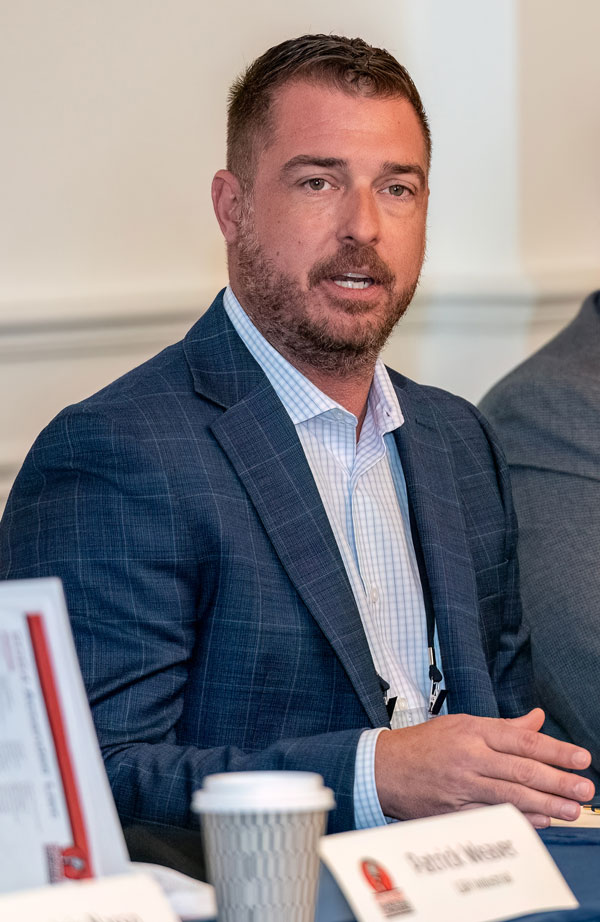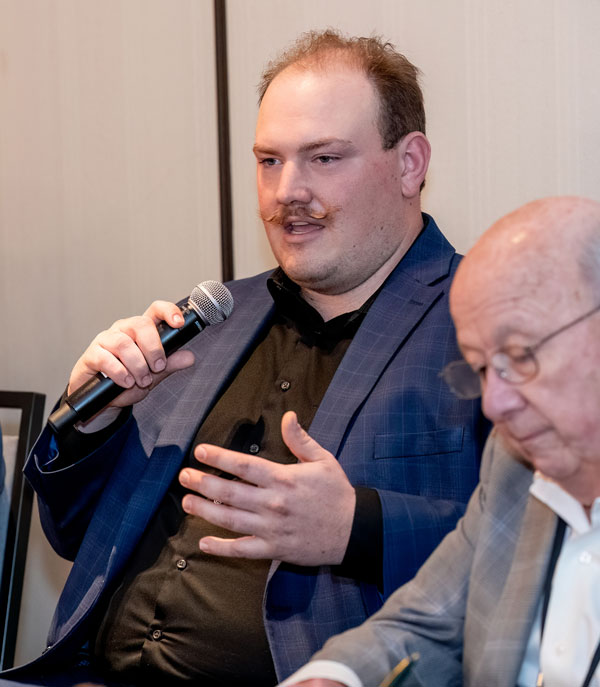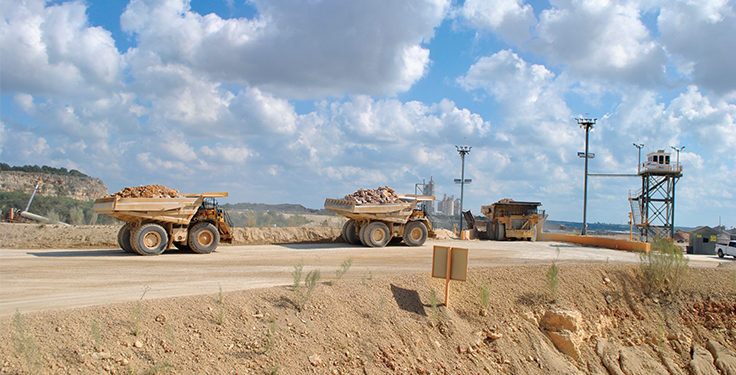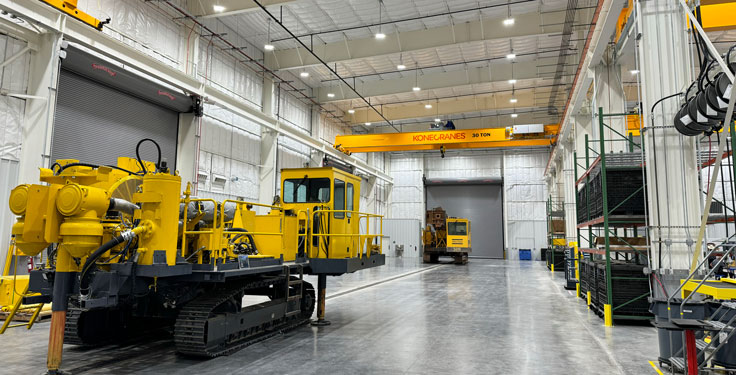
The following transcript was edited for brevity and clarity from one of two concurrent Feb. 2 discussions at the
2024 Pit & Quarry Roundtable & Conference at PGA National Resort. Part two of this conversation can be found here.
PIT & QUARRY: The public perception of the aggregate industry is slowly improving, but more work obviously needs to be done. How would you grade the aggregate industry in recent years in terms of effectively marketing, promoting and telling its story with outside entities, albeit with the community, government regulators or others? What is your company doing differently today to better market, promote and tell your story? How has your company or business evolved its hiring and retention strategies in the last year or two?
CLYDE BECKETT (SEMINOLE TRIBE OF FLORIDA): When people ask ‘what do you do for a living,’ I say ‘I run a rock mine.’ But most people don’t really know what a rock mine is, what they do or what you make there.
We put a few drones up, flying the pit road and around the whole pit, and then we put out some promotional material. It was something people could see to get a better understanding. But I still think there’s a long way to go until people really understand what people in this room do every day.
CHRIS WILLIAMS (CAPITAL AGGREGATES): One strategy we have employed for a number of years is a program called Kids Rock. We engage with elementary schools in almost every community we operate in to bring kids into the quarry. We give them a t-shirt, a little hard hat and some papers for them to take home. It does create a great deal of engagement with their parents, too.
PAT JACOMET (OHIO AGGREGATES & INDUSTRIAL MINERALS ASSOCIATION): Changing perceptions must start at the local level. As a state trade association, we provide rock and mineral kits that our members can take into a classroom and make a connection with students and teachers. The kids can take those home and talk to their parents about why we need a limestone mine, why we need sand and gravel, why gypsum is important and all of those things.
It’s easy to oppose a quarry in your backyard, but it’s harder to oppose that if you know ‘Dan’ works there, ‘Charlie’ works there and they’ve got families to feed and we’re creating all these jobs. It’s important for all of us to provide the tools for our members to get in front of those people and talk about the industry and why it’s important.
CHARLIE JOHNSON (DSC DREDGE): In the 1970s, they launched a campaign for the plastic industry. There was a commercial that shows a woman drinking out of a cup, and the cup disappears. Next thing you know, the countertop disappears. Then, they came and said: ‘Yes, all these things are made by plastics.’ It really drove home the point that without plastic, you wouldn’t have any of the things that you enjoy today.
Why isn’t the aggregate industry doing the same thing with a commercial where your driveway disappears and the road you’re driving on disappears? Drive home the point of how important this industry is to everybody.
KELAN MOYLAN (TCI MANUFACTURING): I don’t think we do a good job of promoting our industry at all. Our focus before was on community relations, and that’s why we talked about what we did. That’s still really important, but the biggest challenge most of us face – whether you’re on the manufacturing side or on the producer side – is workforce.
If we can get out there and tell our story better, not only are we appealing to the community in a more positive way, but we’re bringing more people underneath our tent. Once people come underneath this tent, they don’t leave. That’s because we all have a passion for this industry and want this industry to grow.
With this new generation that’s coming in, if you survey a lot of them, pay is important but they want to make a difference. If we can tell our story better about how we impact the entire country and the entire planet by literally building America, then that’s going to bring more people underneath our tent.

BRYAN SCEPANIAK (WM. D. SCEPANIAK): I’m part of that next generation coming up. Looking at the generations behind me, we need to appeal to them to be in this job market, in this industry and make it seem like it’s not a dirty job.
Part of the reason I love this industry is because you actually see progress in your day-to-day work life. You show up, make actual, physical progress on the project, go home, and you know you made a difference – instead of working at a desk, shuffling papers around and you don’t really see anything happening.
Starting in elementary school is not a bad idea, but we also must attract the ones in high school and college. Going to elementary school is great, but it’s going to be another 10 years before they’re able to apply for a job and actually get into the workforce. Finding that middle ground between the two is important.
KEATON TURNER (TURNER MINING GROUP): I think the mining industry is its own worst enemy when it comes to public perception. The reason I got into this industry is because of the lack of awareness people in my generation and younger have about mining.
How many companies have an Instagram page they’re actively on? Or a TikTok? Probably not many. Being involved in schools is great. Getting kids in elementary school aware of mining is awesome. We do some of those things, but high schoolers with a cell phone spend between 7.5 to 8.5 hours a day on their phone. That’s where the attention is going.
If you go and speak at a school for an hour, how many applications do you guys get from that a month later? Two months later? Maybe one or two. In 2023, we had 11,000 applications for our company. I attribute that to social media.
We’re heavily involved in Instagram, LinkedIn and even on TikTok. So many people want to say you can’t have a white-collar job in mining. You can and there are a lot of great ones. But there also are a lot of young kids who want to get dirty and make six figures getting dirty. We don’t shy away from that. We try to show all the behind the scenes.












